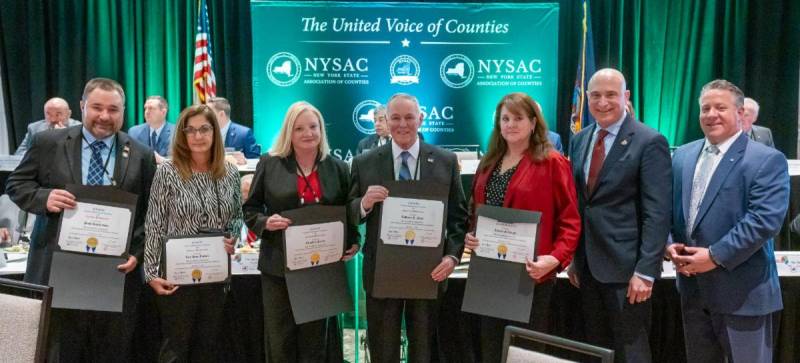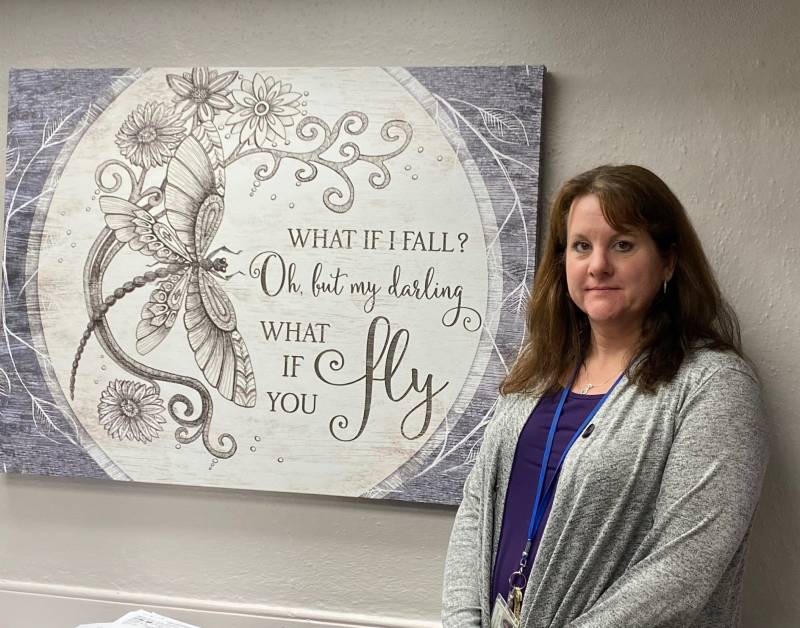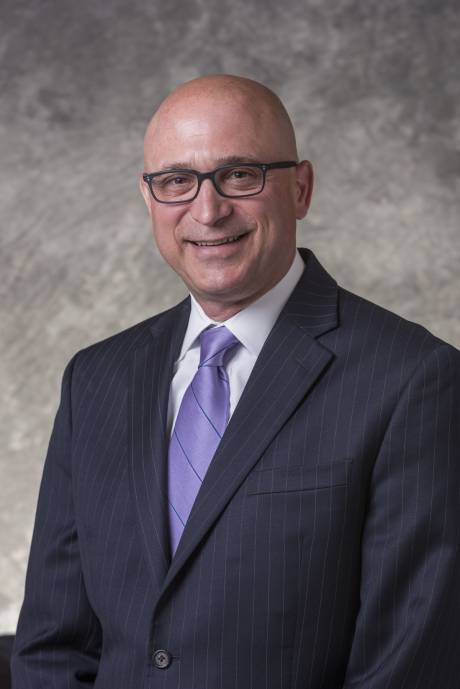NYS Association of Counties recognizes deputy manager, other leaders with certificate

Press Release:
County officials from across the state this week honored five of their peers for graduating with a certificate from the County Government Institute. The Institute, founded in 2004, is part of the New York State Association of Counties (NYSAC).
The graduates included:
- Tammi Ferringer, Deputy County Manager, Genesee County
- Anthony J. Nemi, Legislator, Niagara County
- Elizabeth Partee, County Supervisor, Seneca County
- Lou Anne Randall, Director of Finance, Madison County
- Paul Ruszkiewicz, Legislator, Orange County
The graduation was held during the 2024 NYSAC Legislative Conference in Albany County, in a ceremony honoring the county officials for upholding the pillars of leadership, accountability, and integrity at their graduation ceremony from the County Government Institute.
“CGI has been instrumental in helping me stay current on a broad array of issues and topics that go right to the nuts and bolts of local government operations,” said Anthony J. Nemi. “I am convinced that CGI has made a more effective legislator for those I represent.”
The County Government Institute is an educational program in partnership with Cornell University. CGI instructors are NYSAC staff, county leaders, and Cornell faculty members who are experts in local government structure and issues. County leaders who graduate from CGI have earned a certification that demonstrates their dedication to good government and to upholding CGI’s high standards of county leadership.
“The County Government Institute’s comprehensive curriculum prepares county officials with the skills and knowledge necessary to meet the intense demands of local government today,” said NYSAC Executive Director Stephen J. Acquario.
The Institute's curriculum includes extensive course work on government ethics, building consensus in a political environment, principles of county budget and finance, and public sector labor/management relations. The courses are supplemented with electives, training sessions, and continuing education courses.
“The wide range of topics and chance to meet with colleagues from around New York State oftentimes give me a new perspective on an issue we may be facing,” said Lou Anne Randall. “We need to continue to encourage others to take advantage of the great resource we have in NYSAC.
“The County Government Institute is an outstanding program that has helped me to more effectively perform my duties as a County Legislator,” said Paul Ruszkiewicz.
Courses are offered at all NYSAC conferences, and regionally throughout the year, to enable county leaders to stay up to date on timely issues and opportunities in local government. The knowledge and skills gained through CGI will serve county officials throughout their time in public service and beyond.
“By completing the County Government Institute coursework, graduates demonstrate a commitment to excellence in local government that is at the heart of our association’s mission,” said NYSAC President Daniel P. McCoy. “The skills and knowledge they acquire are a great asset to them and the communities they serve. On behalf of our entire association, I offer my congratulations.”
For more information about the County Government Institute, visit www.nysac.org/cgi or reach out to Chancey Young, NYSAC Member Information Manager via email at cyoung@nysac.org.


